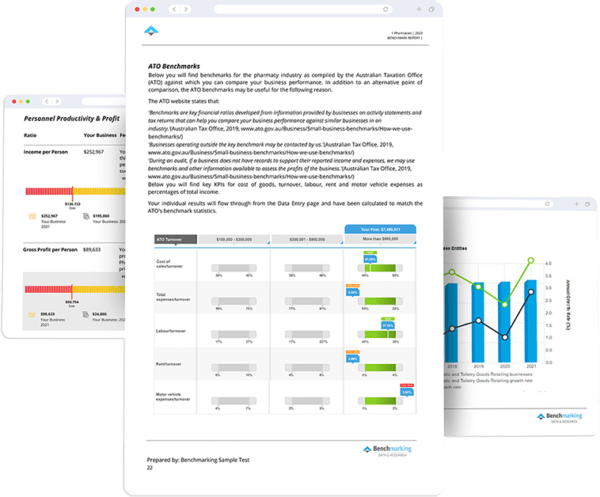How Benchmarking.com.au Uses the ATO Benchmarks
Our Benchmarking Software undertakes benchmarking analysis reports on more than 100 KPI’s across various business categories; including financial, employee and operational. This means that we can provide highly detailed benchmarking insights into business performance, productivity and profitability. Further, our reports only compare businesses with those of similar size, location and industry.
To support our detailed data, we utilise the ATO benchmarking data to give businesses a high-level overview. Combining the ATO general benchmarking results with our detailed insights enables business owners to see how their company is positioned on a greater scale.
You can also use our ATO Benchmark analysis to assess the likelihood of a business audit. With our tool, a business only needs to enter their information once in order to receive both our detailed benchmarking analysis and the ATO benchmarking reports.
Our benchmarking tool further provide businesses with strategic recommendations to drive improvements, industry analysis and a business value.
Find out more about what’s included in our Business Benchmark Reports.






